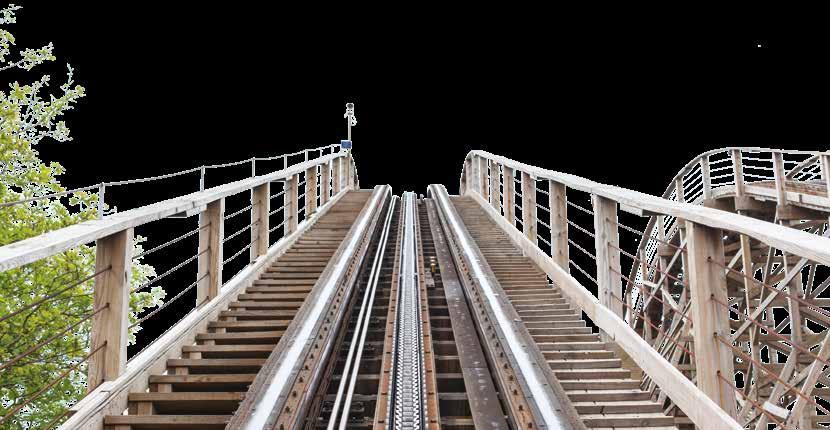
4 minute read
Experiments 1 and 2
1
13
Advertisement
9x 7x
18
1x
2 3 4 5 6
18x 18x 9x 10x 68x
19
1x 軌道車
1 x 3
Red: assemble first Blue: assemble second
tip
a difficulty ranking is given for each model at the top of its assembly instructions page:
Easy Medium Hard
First, build the frame. Then, attach the track to the frame, completing the model. Finally, conduct the experiments using the model you built.
Side view

2
Side view
3

Red: assemble first Blue: assemble second

x 3

4
5

Red: assemble first Blue: assemble second


Side view
6

tip
As A general rule, you don’t hAve to folloW the assembly exactly as shown. if your model is close to the model shoWn, the eXpeRiment will still woRK. in otheR WoRds, you can impRoVise a little When building the models.
7
8
9

1 x7
18 x1


Red arrows
x9
Red: assemble first Blue: assemble second

Done! tip

foR the most stability during your experiments, tape the fRame to the floor!
Force and distance Changing the mass
How does changing the launch force affect how far a roller coaster train travels?
You will need
How does changing the mass of the train affect how far it travels?
You will need
– Model for experiments 1 and 2 – Assembled train

Here’s how
1. After you have assembled the model and train following the instructions on the previous pages, place the model on the floor with empty space in front of it into which the train can be launched. Slide the train onto the track, with its front facing forward, so the bottom wheels are below the track and the top wheels are above the track. It will roll smoothly.
2. Roll the train past the launch rod. If the train does not pass the launch rod easily, it is facing the wrong direction. Remove the train from the track, rotate it around and load it onto the track again.
3. With one hand, pull back the spring compressor bar to compress the spring inside the launcher to the midpoint.
4. Still holding the spring compressor bar, roll the train backward until the car launch trigger meets the resistance of the launch rod.
5. Release the spring compressor bar. How far did the train travel?
6. Put the train on the track in front of the launcher again.
7. Now pull the spring compressor bar back until it clicks into the notch in the launcher and locks into place.
8. With your finger, flick the train backward toward the launcher. How far did the train travel this time?
What’s happening?
Inside your launcher is a spring. When compressed, springs store elastic potential energy. The more a spring is compressed, or squished, the more elastic potential energy is stored in the spring. When the compressed spring inside the launcher is released, it puts a force on the train, causing the train to accelerate — in other words, to increase in speed moving forward.
– Model for experiments 1 and 2 – Assembled train – PEG REMOVER
– 6 Large coins (with a diameter up to 27mm)
6x Coins
Here’s how
1. Slide the train onto the track.
2. Pull the spring compressor bar back until it clicks into the notch in the launcher.
3. With your finger, flick the train backward, toward the launcher to launch it. How far does the train travel?
4. Take the train off the track. Using the PEG REMOVER, remove the SHORT BUTTON FIXERS on the sides of both car covers, then remove the car covers.
5. Place three large coins (with a diameter up to 27mm) in each car.
6. Replace the car covers and SHORT BUTTON FIXERS on both cars.
7. Launch the train again. What do you notice?
What’s happening?
You probably observed that the lighter train goes faster and farther than the heavier train. The acceleration of an object depends on two things, force and mass. According to Newton’s second law, the acceleration of an object is directly proportional to the net force and inversely proportional to its mass. As you saw in experiment 1, when you put a greater force on an object, it has a larger acceleration. Whereas, when you add more mass to an object, as in experiment 2, it has a lower acceleration. If you conduct these experiments several times, you might see slightly different results. There are many variables here, including the force from the launcher. If you flick the train at the launcher with more force, it will travel further than if you flick the train with a small amount of force.






